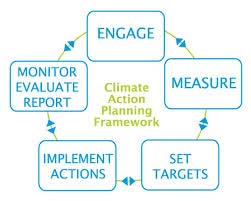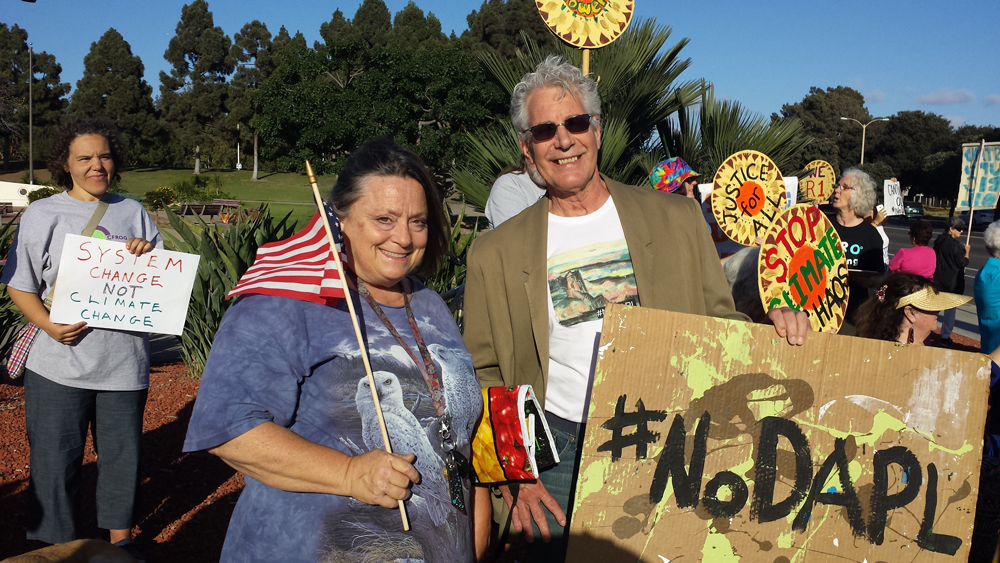350 Ventura County Climate Hub Input for Policies
Resilience Section of Climate Chapter
GOAL A: Community engaged in achieving targets and developing resilience through outreach, collaboration and adaptive management to reduce vulnerability and make the county more climate-ready.
POLICY
- Continuous feedback. Hold periodic public updates with information and inform each community regarding progress toward attaining emissions reduction targets.
- Outreach. Conduct outreach activities, including online and social media, community presentations, event participation, and other strategies to continue to engage the public and solicit input, suggestions, and participation.
- Collaboration. Provide opportunities for collaboration and an opportunity for the cities and the County to receive feedback on potential improvements or changes to the emissions-reduction and resilience enhancing measures.
- Adaptive management. Climate resilience planning must integrate a monitoring program that is able to detect the needed information for strategy evaluation and incorporate feedback loops to link implementation and monitoring to the decision-making process that also takes advantage of new technologies and climate protection science to discover continuously higher-level, more comprehensive approaches to match the scale, variety and difficult predictability of climate hazards.
GOAL B – Healthy and safe communities
POLICY
- Foster a connected community Enable movement throughout communities with minimal single-occupancy automobile use by prioritizing development of strong bicycle and pedestrian networks linking together car-free, fully public spaces (i.e. not subject to the corporate codes of conduct present within shopping malls) that serve as nodes for neighborhood services, public and private transit options, social activities, and event programming.
- Multi-generational co-housing. Promote living arrangements to strengthen social bonds across all age groups.
- “Right-size” emergency and service vehicles. Design reduced-width automobile travel lanes for smaller emergency and service vehicles as necessary to permit pedestrian, bicycle, and transit improvements.
- Improve baseline resilience in vulnerable populations
- Support basic needs. Invest in social systems that help support basic needs for people, including food, water, shelter, transportation, and healthcare that are vulnerable to breakdown from climate-related crises, especially if they currently suffer from dwindling resources and financial support.
- Affordable non-toxic food. Food grown without toxic inputs should be readily accessible to everyone.
- Eliminate food deserts and develop food hubs. Develop and expand the model of the food hub to connect local regenerative farmers with their local communities.
- Minimize or compensate for displacement. Encourage development that minimizes the displacement effects of gentrification and/or offers existing residents of the community just compensation for displacement, financial assistance to renters and homeowners that would be impacted by gentrification, and that guarantee a “Right to Remain” within the new development in order to maintain the valuable existing community fabric.
JUSTIFICATION
Fruitvale policies exemplify development without gentrification: https://www.mercurynews.com/2018/03/29/development-without-gentrification-oaklands-fruitvale-is-the-model-report-says/
How can L.A. build dense new housing without displacing working families? With a ‘Right to Remain’ http://www.latimes.com/opinion/livable-city/la-ol-gaisford-right-to-remain-gentrification-20180212-story.html )
GOAL C – Adequate water resources
- Use less water
- Manage water as one, protect watersheds, expand wetlands
GOAL D – Sustainable, climate-resilient economy
- Diversify agriculture
- Be ready. Seize opportunities to prepare and adapt
GOAL E: Mainstream the use of climate and related economic projections
- Protect supply chains. Build a resilient and equitable supply chain, evaluate vulnerabilities
- Evaluate resilience. Quantify value of resilience investments
- Anticipate a global rising price of carbon. Nations are adopting policies to tax carbon or cap emissions of carbon dioxide that will soon include international trade conditions to isolate those nations that do not reduce emissions.
GOAL F: Manage buffer zones
- Buffers. Make room for water and exclude pollution by maintaining wider buffers
- Plan to avoid hazards. Align plans with hazards with a priority on disadvantaged communities.
- Protect ecosystems. Protect streams, wetlands, farms, ranches, forests, chaparral. Continue to reduce toxic pollution, loss of streamflow, and invasive plant species that harm biodiversity.
- Minimize fragmentation. Reduce development that fragments habitats compromising ecological integrity of some landscapes throughout the county, making them more susceptible to climate change hazards, such as flooding.
GOAL G: Promote ag preparedness and food security
- Farm carbon, water and diverse crops
- Subsidize regeneratively grown local food
- Endorse the practice of solar cooking of food for the public whenever the sun is shining.
GOAL H: Protect infrastructure and built systems
- Map areas vulnerable to sea-level rise through and beyond 2040. Measure potential costs of sea level rise suchs as from people displaced, real estate destroyed, infrastructure destroyed, environmental hazards, and begin planning for how to address sea-level rise.
- Preparedness for businesses and organizations. Position your business or organization to recover from extreme events
- Anticipate rising price of carbon. Reduce carbon intensity of product supply chains.
- Look at essential systems in new ways to assure functionality during crises. Invest creatively in the most essential systems providing water, sanitation, drainage, communications, transportation, and energy supporting designs that rely less on large grids and are more self-sufficient to perform neighborhoods or communities are islanded as a result of a disaster.
PROGRAM
Mapping of vulnerable areas can include maps like this, but with alternative solutions to loss of land and related issues detailed and presented with maps/infographics.
https://mtc.ca.gov/sites/default/files/Sea_Level_Rise_8x11.pdf
JUSTIFICATION
Regarding the current prohibition of solar cooking food for public gatherings in solar ovens, the Health Department does not include solar cooking devices within their approved cadre of cooking platforms because of a lack of American National Standard Institute (ANSI) credential and Underwriter Laboratories (UL) Listed testing. Food safety is not determined by the above standards. Food safety is determined by thermometer readings which can be well accomplished with any solar cooking device and appropriate monitoring.
GOAL I: Reduce emissions from consumption of goods and services
- Gather baseline data and target consumption-based emissions. Develop strategies to reduce local and global impacts of consumer choices.
- Educate consumers. Provide information towards economical, sustainable consumption.
GOAL J: Increase emergency preparedness and prevention
- Risk reduction. Reduce forest flammability, improve biodiversity and water supply. Apply global lessons in building for seismically-sound structures within and near fault zones, and areas of potential liquefaction during an earthquake; require proven standards to be met by new and retrofitted.
- Preparedness. Prepare yourself for emergencies, learn CPR and first aid. Encourage expansion of the Community Emergency Response Team programs throughout Ventura County.
- Research new best practices. Encourage STEM program development at CSUCI that is at least partly oriented towards the research and development of new building materials and innovations in structural design that can be applied to the natural disasters faced locally (earthquakes, fires, floods, mudslides, etc.).
- Map development plan for microgrids with energy storage in community center disaster shelters. Encourage local power generation and community microgrid development to minimize risk of large-scale power outages in emergency situations.
- Collaboration. Invest in radical collaboration for interagency preparedness.
- Reserve fund for people displaced by disasters. Seek to create a regional fund for disaster response that can provide assistance to local government agencies to address urgent disaster impacts, help cover relocation costs of those displaced by disasters and climate change effects, etc.
GOAL K: Monitor climate and its effects
POLICY
- Reality check. Monitor real-time conditions to refine climate change forecasts
PROCESS
Gather baselines and create a resilience index
Align investments with values, coordinate incentives and funding streams
Measure resilience over time
JUSTIFICATION FOR CLIMATE RESILIENCE GOALS
Hotter, Drier Weather with Longer Summers: More extremely hot days, More frequent and intense droughts, more frequent and intense wildfires, warmer nights, fewer winter nights that freeze
More Variable Rain: Greater risk of extreme floods
Sea Level Rise: Higher sea level and storm surge


